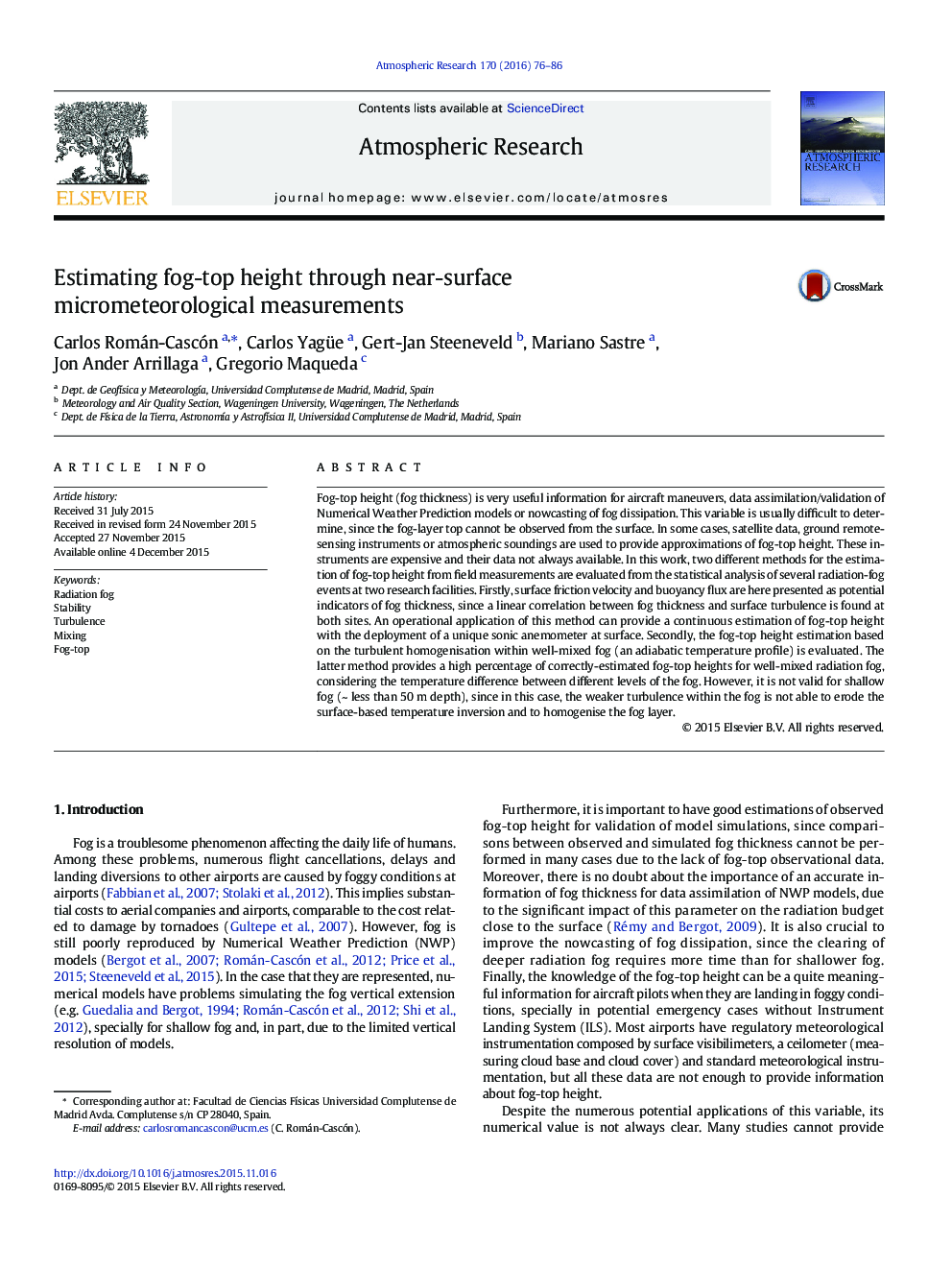| Article ID | Journal | Published Year | Pages | File Type |
|---|---|---|---|---|
| 4449584 | Atmospheric Research | 2016 | 11 Pages |
•Fog top height is estimated from surface turbulent measurements.•Friction velocity presents a linear relation with fog-top height.•The estimation of fog-top height through temperature convergence is evaluated.
Fog-top height (fog thickness) is very useful information for aircraft maneuvers, data assimilation/validation of Numerical Weather Prediction models or nowcasting of fog dissipation. This variable is usually difficult to determine, since the fog-layer top cannot be observed from the surface. In some cases, satellite data, ground remote-sensing instruments or atmospheric soundings are used to provide approximations of fog-top height. These instruments are expensive and their data not always available. In this work, two different methods for the estimation of fog-top height from field measurements are evaluated from the statistical analysis of several radiation-fog events at two research facilities. Firstly, surface friction velocity and buoyancy flux are here presented as potential indicators of fog thickness, since a linear correlation between fog thickness and surface turbulence is found at both sites. An operational application of this method can provide a continuous estimation of fog-top height with the deployment of a unique sonic anemometer at surface. Secondly, the fog-top height estimation based on the turbulent homogenisation within well-mixed fog (an adiabatic temperature profile) is evaluated. The latter method provides a high percentage of correctly-estimated fog-top heights for well-mixed radiation fog, considering the temperature difference between different levels of the fog. However, it is not valid for shallow fog (~ less than 50 m depth), since in this case, the weaker turbulence within the fog is not able to erode the surface-based temperature inversion and to homogenise the fog layer.
